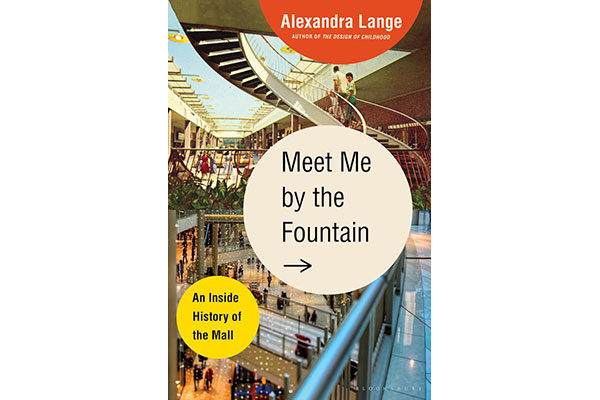
What was your mall?
Mine was Oakridge Centre in Vancouver. It wasn’t particularly glamorous with its exterior of boring brown brick, but it was the town square for our pocket of the city. Anytime we went to Oakridge, we ran into somebody we knew.
I knew it intimately as a kid, visiting the family doctor for my first colds and flus, meeting Santa at Christmas, fishing coins out of fountains, rolling in the carpeted play pit and lining up at the cinema for blockbusters like the Harry Potter series. Sprinkled among the stuff of typical malls like mmmuffins, the Bay and Electronics Boutique were more local offerings, like the underground library where I learned to read.
As I got older, we pinched shopping carts from the Zellers to race around the neighbourhood. Oakridge was at the nexus of a number of high schools, and the food court came to life after school on Fridays as the after-school lounge for local teens. Whether you wore a private school uniform or not, you’d file in with your friends to feast on dollar tacos and greasy poutines.
You might have had a relationship like this with a mall of your own: the base of errands like haircuts and insurance renewals, and also the site of first dates and family outings.
When Alexandra Lange, the American architecture and design critic, announced that she was writing a book on malls, I eagerly awaited the volume as validation of their overlooked role in the ecosystems of downtowns and suburbs.
I’ve stopped in malls around the world. Some are local town squares, like Oakridge was for me. There’s Portland’s Chinese-Vietnamese Fubonn Shopping Center, fronted by a towering moon gate, where small-time restauranteurs can buy giant stock pots for noodle soups. But some malls are mini-cities. In Shanghai, I stood in the shadow of Aegean Place, a hulking nine-storey spaceship of a mall whose outer shell was a jumbotron. On its roof were a farm and pony ranch.
Despite the mark they leave on the landscape, I’ve encountered very few people paying attention to the rhythms of mall life in my time covering urban issues as a journalist.
North America is full of self-serious planners and designers who worship the Greenwich Village visions of urbanist Jane Jacobs, blasting anything that carries a whiff of suburbia.
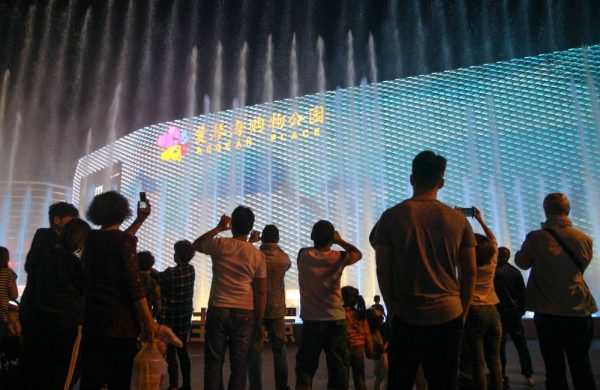
I hope this fun fact from Lange shakes their faith: Jacobs herself was a fan of the mall.
In the opening of the book, called Meet Me by the Fountain: An Inside History of the Mall, Lange shares her own apprehension about writing a title on this topic.
She asks: what’s up with this rush to “dance on the mall’s grave”?
Mall-pocalypse?
There have been pop culture critiques of the mall as early as George Romero’s Dawn of the Dead from 1978, in which a band of survivors seeking refuge from a zombie horde takes up residence inside a mall. They domesticate their hideaway with sofas and go on dates at the mall restaurant, prompting one of them to cry, “You are hypnotized by this place, all of you! It’s so bright and neatly wrapped, you don’t see that it is a prison too!”
In the 2000s, malls struggled as their anchor stores left. Romero’s apocalyptic vision became a reality, with DeadMalls.com and other pockets of the internet lovingly documenting the fall of local malls: ghostly corridors, parking lots choked with weeds, snow falling through broken skylights.
Did people just not like malls? Lange isn’t convinced by this simple dismissal. Rather than a collapse of malls, she points to a collapse of retail as we once knew it.
There’s the decline of department stores to blame. Once go-to destinations, they’ve lost their cultural role as tastemakers. There’s also the fact that the U.S. simply has too many malls. Mark Cohen, the director of retail studies at Columbia University who also worked as a department store CEO himself, is quoted in the book saying, “The United States is blessed with a tremendous amount of space, and the mall industry has taken tremendous advantage of that to the point of foolishness.” The mall boom was fuelled by the consumption habits of a booming middle class, which has become more polarized, skewing richer and poorer.
Then came the rise of online shopping. Some predicted it would deal a death blow to malls. But even with the pandemic, this fear proved to be greatly exaggerated. In Canada, online shopping shot up from 14 percent in 2019 to 32 percent in 2020, before dropping down to 15 percent in 2021. It’s true that there are malls closing, but many are also evolving with the times.
“Shopping isn’t going anywhere,” writes Lange, “and it’s so much nicer to do it together.”
The Gruen effect
So what is it about the mall — from its form to the activities that it hosts — that makes it such a persistent global species?
Anyone who dismisses malls as highly evolved creatures of capitalism will miss the ingenuity that led to their creation and design.
The man who started it all — the magnetic mall maestro — was Victor Gruen. Gruen was a short man with wild eyebrows who was described by Fortune magazine as a “torrential talker with eyes as bright as mica and a mind as fast as mercury.” He was born in 1903 in Vienna, where he studied architecture and worked until 1938, when Austria was annexed by Germany under Nazi rule. Gruen, who was Jewish, took off for the U.S., where he built up an eclectic resume.
In New York City, he worked on the Futurama, a model of America two decades into the future, and the centrepiece for the World’s Fair. He later moved to Los Angeles, and with his second wife, an interior designer, they lent their talent to Grayson’s clothing boutiques, designing storefront displays that were dazzling exhibits of glass, light and product. He was invited to design a Milliron department store, which included touches like rooftop parking and a glassed-in portion with a restaurant, daycare and community auditorium. Lange expertly details his experience on these appetizers that would eventually lead up to his mall of a main dish.
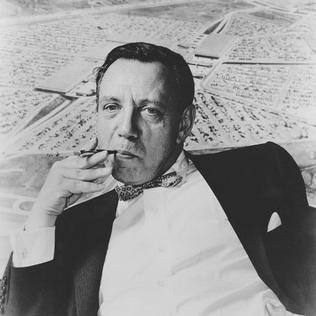
Gruen came up with the mall concept as a solution to car-oriented suburban sprawl, a strange fact for us to encounter almost eight decades later, considering how malls and sprawl have become so intertwined. Gruen’s dream was the mall as a centre of culture, society and services, the kind of place that old European cities were. But to execute his vision, he needed someone with deep pockets.
So Gruen went to department store giant Hudson’s in Detroit, where he caught the ear of executives worried about the migration out of downtown, where the shopping was done, to the suburbs. By the end of the week, Gruen convinced Hudson’s to be part of a four-mall venture in all directions of Detroit’s sprawl. Northland Centre, the first open-air suburban mall, opened in 1954 to critical and popular acclaim, with up to 50,000 visitors showing up a day — far more than needed for the project to be profitable.
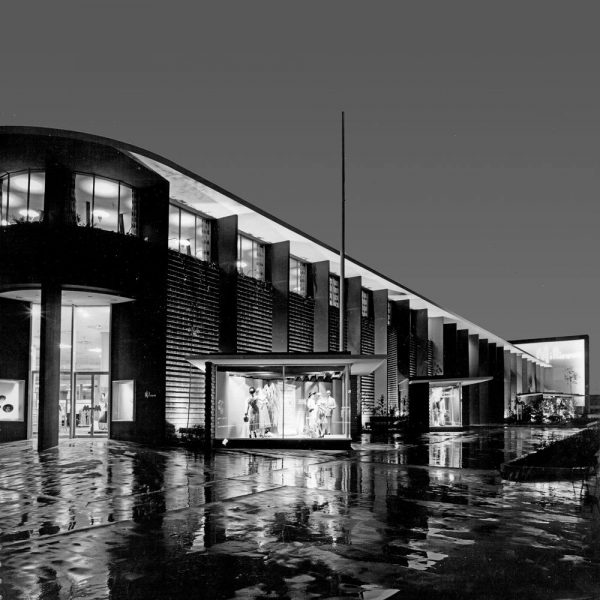
From there on, Gruen became the go-to guy for mall development. Many signature features of our malls today were present in his earliest iterations: big anchor stores, wings with idyllic names to help orient shoppers, and decorations like plants, fountains, and sculptures. Atriums, elevators, and overhead walkways made it pleasurable to people watch. It was the American answer to the French arcades and Italian gallerias of the 19th century, grand and memorable shopping strips covered with iron-and-glass roofs. As for food courts, we now think of them as fast and cheap places to grab a bite, but they started off in the style of museum cafés, with tastefully chosen chairs and open-air courtyards.
Part of Gruen’s genius would come to be known as the “Gruen effect” or the “Gruen transfer.” Lange describes it as “the moment when your presence at the mall tips from being goal-oriented (must buy new underwear, must buy birthday gift) into a pleasure in itself.”
Whose mall is it anyway?
Daycares. Theatres. Theme parks. Skating rinks. Ever since Gruen’s creations, other developers and architects ran with the concept.
Lange includes a number of big names behind the making of America’s malls, from Frank Gehry to I.M. Pei.
One surprising figure is science fiction author Ray Bradbury, who too lamented that Los Angeles lacked meeting spots like the plazas of Mexican cities, the outdoor restaurants and bars of Paris and even his own childhood in small town Illinois: “In those days there was a microscopic community in every neighborhood: the theater, the sweet shop, the drugstore fountain. Your friends? Why, they were always there!”
In an essay penned in 1970, he dreams up a neighbourhood design with coffee shops and “conversation pits,” which end up inspiring a real mall, the Glendale Galleria. The architect Jon Jerde went on to design a number of famous malls like Universal CityWalk and the Mall of America outside Minneapolis, all focused on recreating town squares where interactions can happen.
But while malls were intended to save the suburbs, they only provided a bit of an oasis for public life that didn’t have anywhere else to flourish. And that public life occasionally came to a head with the private face of the mall, as containers of commercialization and consumption, privacy and security.
The architect César Pelli called one of the malls he designed “more like a downtown living room.” Gruen’s own vision was the same: for malls to host civic life. But at the end of the day, are malls public or private spaces?
As shopping centres, you might assume that they’re private spaces, no question about it. But legal challenges sought a more definitive answer to this question, with a handful of states guaranteeing the right to free speech in malls, determining that they had indeed become the only town squares in their respective communities for public life to happen.
Other states were unconvinced. In 2015, one dramatic confrontation was when Black Lives Matter protesters chose to demonstrate at the Mall of America. A Minnesota judge concluded that malls in her state were private, not public, spaces.
But malls still provide the illusion of public space to many.
In 1982, “mall walkers,” people who jog or walk briskly in malls for exercise, took off. Malls proved to be a haven for seniors and families with young children in particular. They were weather-proof and washroom-rich. For mall-walking seniors, the mall would always be the perfect temperature for cardiovascular exercise and they would never get lost in it the way they might in a neighbourhood. South of Vancouver is Richmond Centre, which has its own version of mall walkers: 250 people meeting in the mornings to do tai chi.
But you never know when a crackdown on these activities might happen. In 2016, Park Royal in West Vancouver tried to chase out the regulars playing chess in the food court, a routine that emerged in the early 1980s, around the same time mall walking did. The mall threatened regulars with arrest for loitering, only to later reverse the decision and create a special chess area for players away from the food court.
Are people still welcome in a mall if they’re not shopping enough? It’s all the whim of management.
A news segment from CNN on the Black Lives Matter protest in 2015 at the Mall of America, with armed police and security guards forcing out demonstrators. Video by CNN via YouTube.
Future malls, power centres
Two years before his death in 1978, Gruen would reject his creation. “I am often called the father of the shopping mall,” he said. “I would like to take this opportunity to disclaim paternity once and for all. I refuse to pay alimony to those bastard developments. They destroyed our cities.”
Gruen thought European civic life, with shops, offices and housing all mixed together, would work for the American suburbs. But, as Lange writes, “he failed to acknowledge that the market, rather than community, would always be their guide.” The kind of dense living he imagined was no match for the hunger that buyers and developers had for single-family development and car-centric lifestyles.
Malls continued their evolution after his death, sometimes embodying what he hated the most, sometimes coming closer to realizing his visions.
Developers created “power centres,” big box stores around parking lots, eliminating all the indoor connectivity that malls offered to cut costs.
In the late 1980s, “lifestyle centres” showed up. Developers knew that suburbanites wanted urban energy, and so they gave it to them. They created master-planned projects that mimicked main streets with rows of restaurants, tree-lined sidewalks and maybe even offices and apartments above.
“Ethnoburbs” boomed in the same decade, with the development of malls catered towards a specific immigrant clientele, not without racist backlash. (I was delighted to see that Lange cited my Tyee piece on the subject.) Chinese mall after Chinese mall was built in the suburbs of Vancouver and Toronto, with everything from the latest rice cookers to food courts of regional specialties. I remember visiting Parker Place as a kid with my father, who bought me a bubble waffle, fresh out of the iron, a snack he ate when he was growing up in Hong Kong.
Abroad, countries have imbued malls with their own meaning. Lange dedicates a chapter to how the American export has fared in places like the Philippines — home to malls larger than the Mall of America — that have “absorbed” civic functions into their bodies.
The original indoor malls of the 20th century, now decades old, are evolving too.
“Strip away the branding and a dead mall just becomes a building,” Lange reminds us. “A centrally located, highly recognizable barn of a building.”
In pricey Metro Vancouver, malls are valuable real estate, and just about all of them are being reinvented. Most are getting condo towers and new streets made to look public but managed by developers, down to the busker that shows up by the fountain. The new Oakridge set to replace the mall I grew up in is making grand promises to “restore nature, establish community and revolutionize retail,” with the smallest condo at 456 square feet going for almost $1 million.
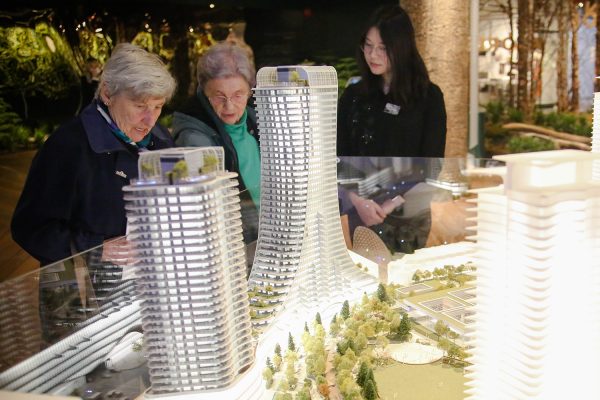
But while malls are born from the top down, life happens from the bottom up. And you never know when you’ll come across real surprises, like church services every Sunday at the Brentwood mall cinema or protesters packing the Aberdeen Centre atrium to sing Hong Kong’s pro-independence anthem.
Inclusion versus exclusion, community versus consumerism — malls present many fascinating tensions and contradictions within their four walls. Lange has written a colourful book on this overlooked but over-derided species.
Chances are there’s a mall near you right now. Love ’em or hate ’em, they’ve become as widespread and deep-rooted in our communities as libraries and main streets, and they have a lot to teach us.
…
For more information on Meet Me By The Fountain, visit the Bloomsbury website.
**
Christopher Cheung is a reporter at The Tyee, where this story originally appeared on July 19, 2022.

